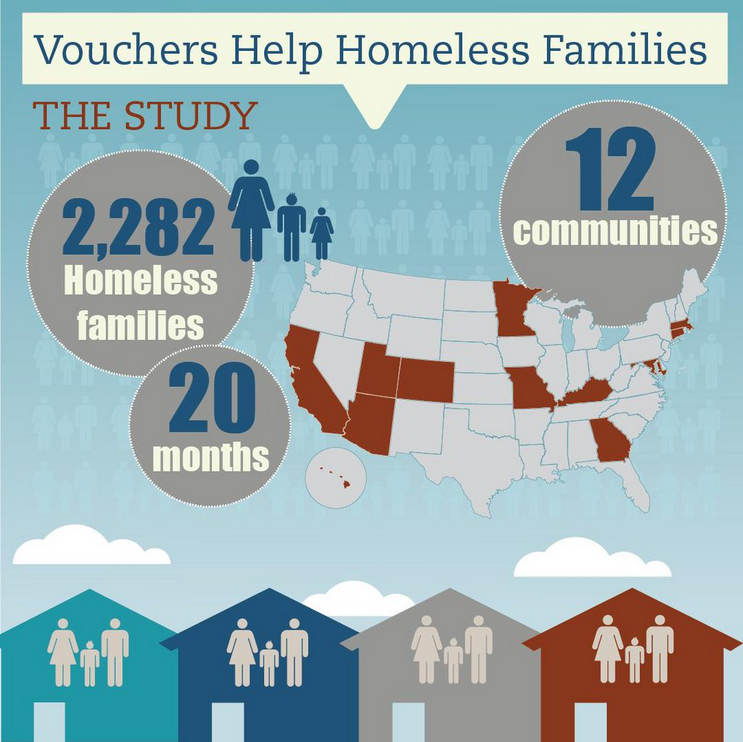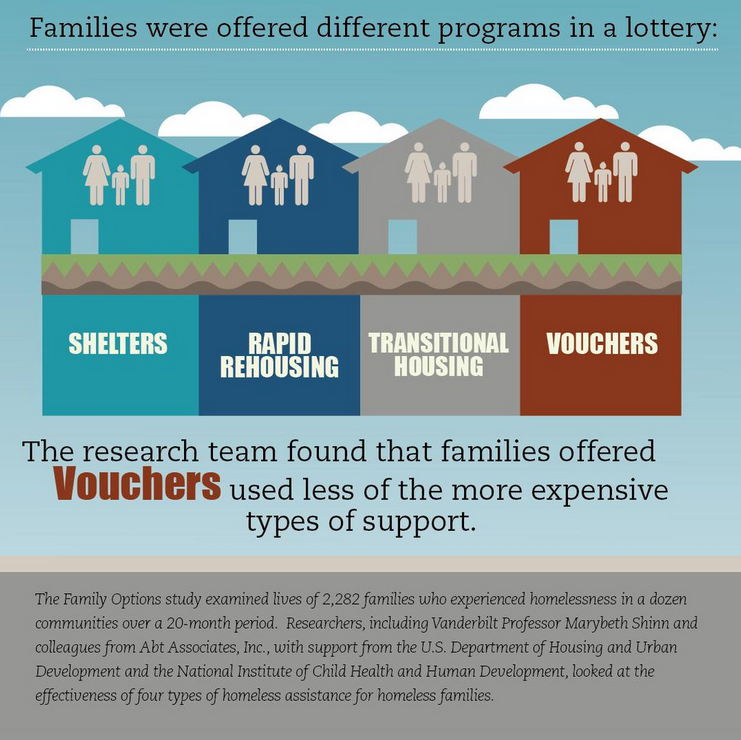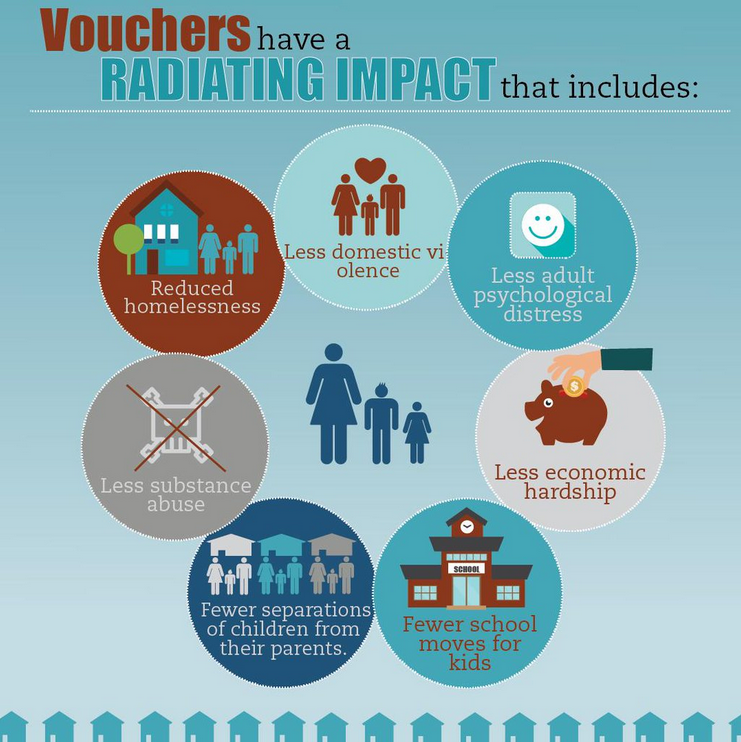The causes of family homelessness include unemployment, low wages, low rates of government assistance and a lack of affordable housing options. Factors that are linked to homelessness include food insecurity and rising housing costs. These forces work together in developing a precarious situation for struggling families, who often find themselves only one illness, accident, or unexpected expense away from homelessness.
This week’s infographic, published by the Peabody College of Education and Human Development at Vanderbilt University, looks at the impact that housing vouchers can have on homeless families. Data in the infographic comes from the Family Options Study. The Family Options Study is an experimental study that examined over 2200 families, including more than 5000 children, experiencing homelessness across several communities in the United States. Findings presented here are based on studies over an 18-month period. The Family Options study is ongoing, and will be completed over the next two years.
The study mainly examines four interventions: permanent housing subsidies, community-based rapid re-housing, project-based transitional housing and usual care. Permanent housing subsidies were defined by the study as “housing choice vouchers that included assistance to find housing but no other supportive services.” Community-based rapid re-housing interventions were defined as “temporary rental assistance paired with housing-focused services to help families find and rent private market housing”. Project-based transitional housing was defined as “temporary housing for up to 24 months in agency-controlled buildings, paired with intensive supportive services”. Lastly, usual care was defined as “any housing or services that a family accesses in the absence of immediate referral” to the above three interventions. Participating families were offered different programs through a lottery system, and each family participated in one of the above interventions.
The study found that permanent housing subsidies were the most effective solution across a broad range of indicators. The cost of these subsidies were on a similar level, or substantially less than, the alternative interventions. Permanent housing subsidies were effective in stabilizing the family environment and improving adult well-being. Permanent housing subsidies also corresponded with a reduction of intimate partner violence by half. Professor Marybeth Shinn, co-lead investigator on the study also noted that “child well-being improved and other psychosocial issues were more likely to be resolved.” For readers interested in learning more about the Family Options Study, I invite you to watch a recording of the study briefing published by the US Department of Housing and Human Development.
In the absence of funding for research, it is impossible to enact policies that are research-informed. While there are clear contextual differences in the fight against homelessness in the United States versus Canada, the Family Options Study is of considerable interest to researchers and individuals with a desire to solve homelessness in Canada. This is partially because large-scale experimental studies that directly look at issues around homelessness are few and far between. One example of a Canadian-based study that looked at solutions to homelessness was the At Home/Chez Soi study, which was conducted by the Mental Health Commission of Canada and examined Housing First as a means of ending homelessness for people living with mental illness. The results of this Canadian study impacted the direction of programs and services supporting those who are experiencing homelessness.




